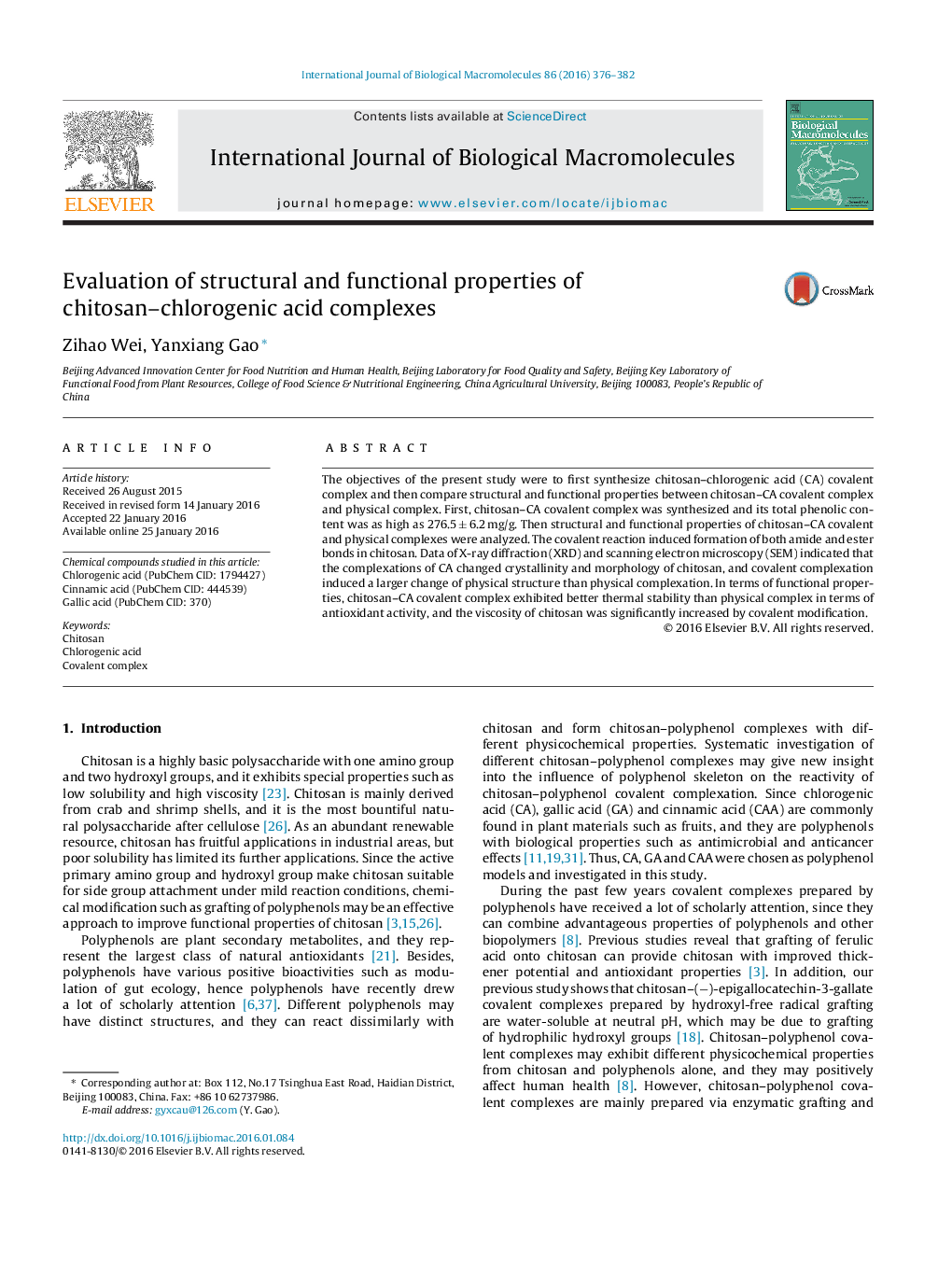| Article ID | Journal | Published Year | Pages | File Type |
|---|---|---|---|---|
| 1985915 | International Journal of Biological Macromolecules | 2016 | 7 Pages |
•Chitosan formed covalent complex with chlorogenic acid (CA).•Chitosan–CA covalent complex had as high as 276.5 ± 6.2 mg CA/g complex.•Covalent complexation induced a larger change of physical structure.•Chitosan–CA covalent complex was more thermally stable in terms of antioxidant activity.•The viscosity of chitosan was significantly increased by covalent modification.
The objectives of the present study were to first synthesize chitosan–chlorogenic acid (CA) covalent complex and then compare structural and functional properties between chitosan–CA covalent complex and physical complex. First, chitosan–CA covalent complex was synthesized and its total phenolic content was as high as 276.5 ± 6.2 mg/g. Then structural and functional properties of chitosan–CA covalent and physical complexes were analyzed. The covalent reaction induced formation of both amide and ester bonds in chitosan. Data of X-ray diffraction (XRD) and scanning electron microscopy (SEM) indicated that the complexations of CA changed crystallinity and morphology of chitosan, and covalent complexation induced a larger change of physical structure than physical complexation. In terms of functional properties, chitosan–CA covalent complex exhibited better thermal stability than physical complex in terms of antioxidant activity, and the viscosity of chitosan was significantly increased by covalent modification.
